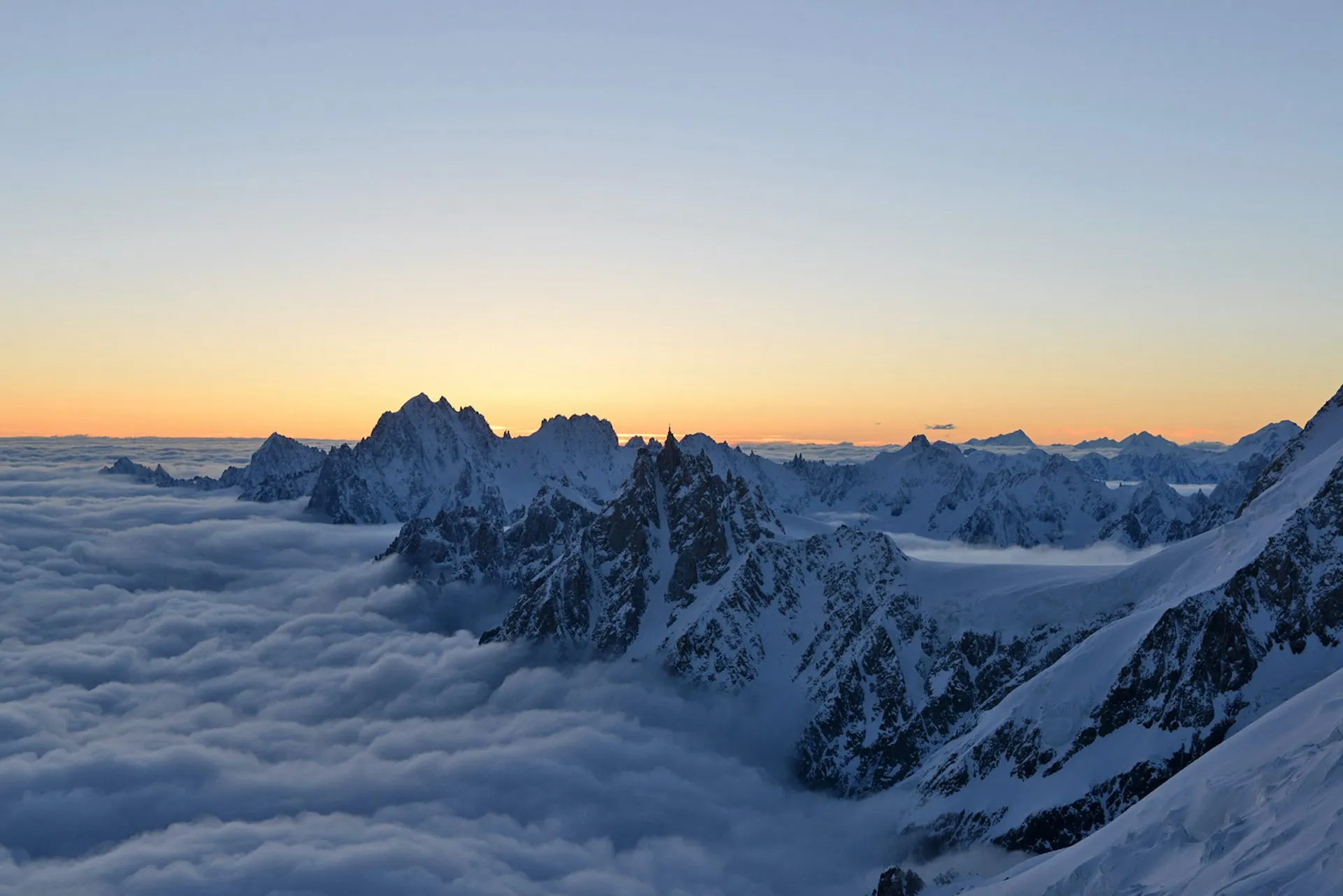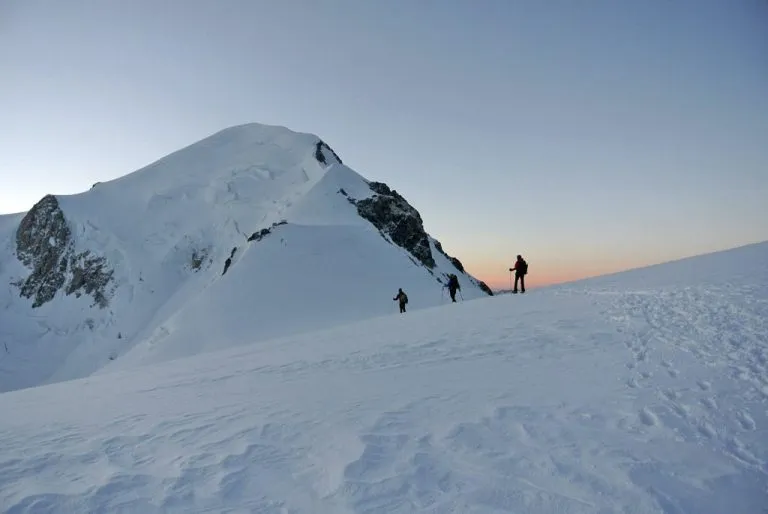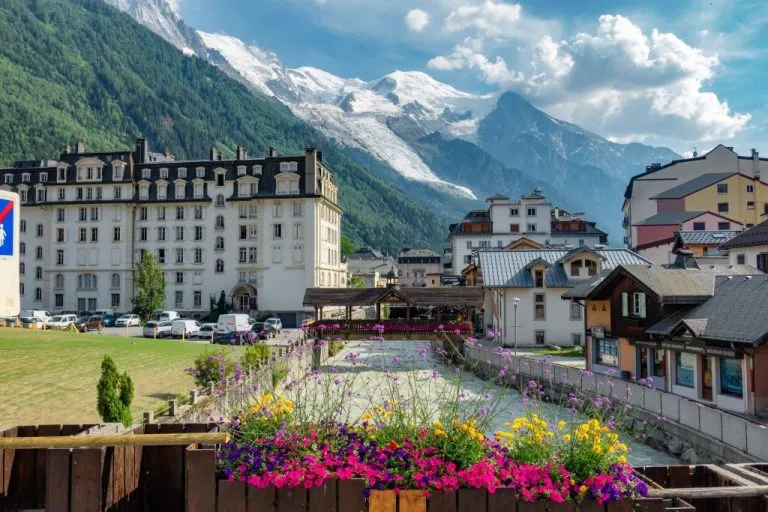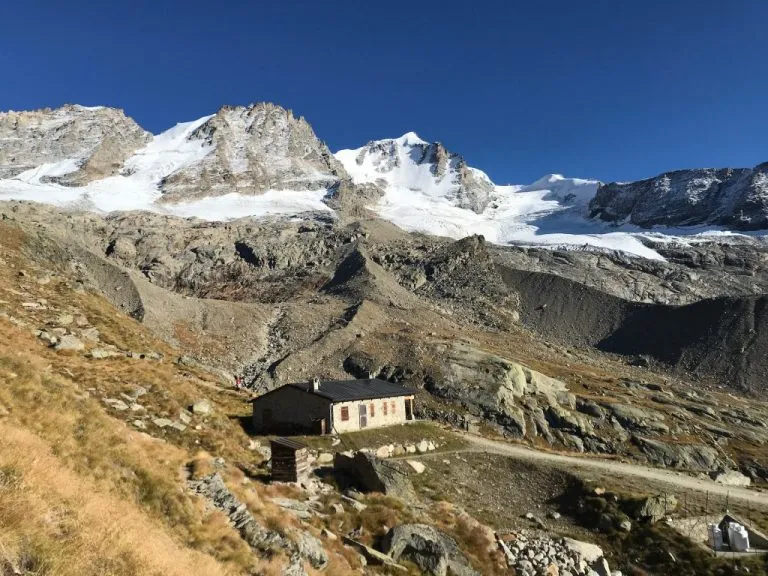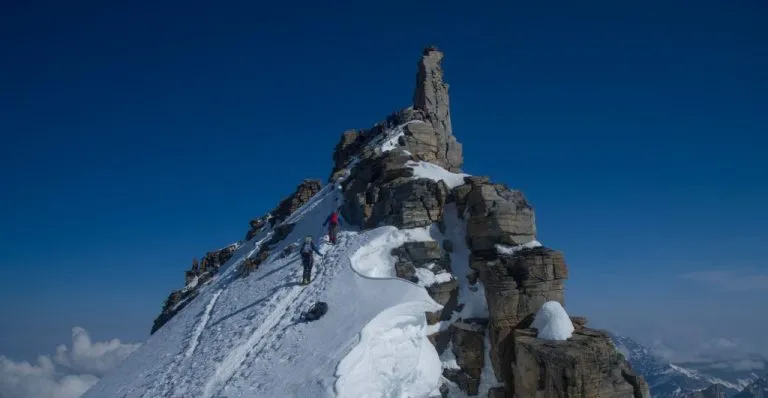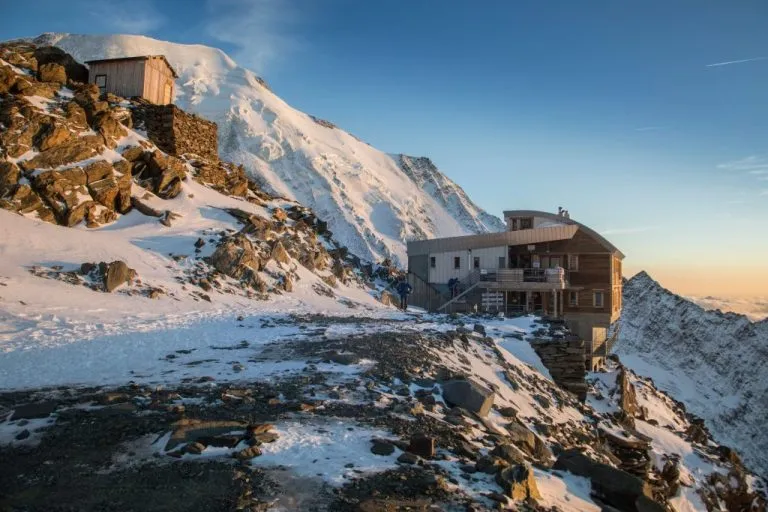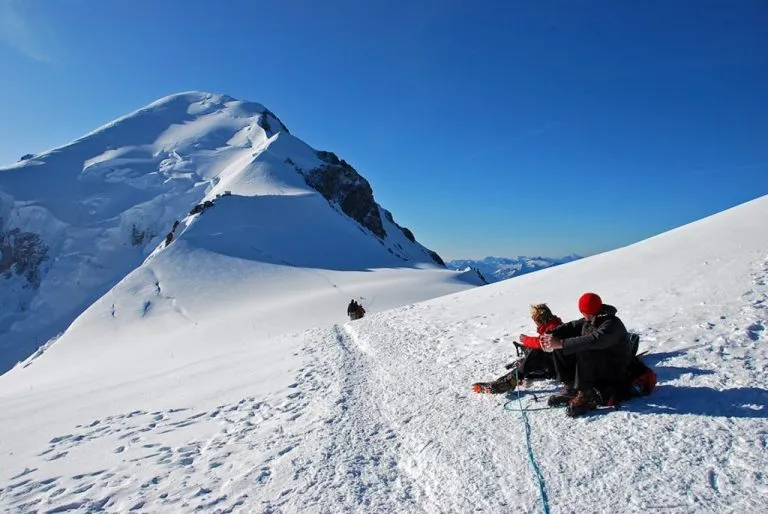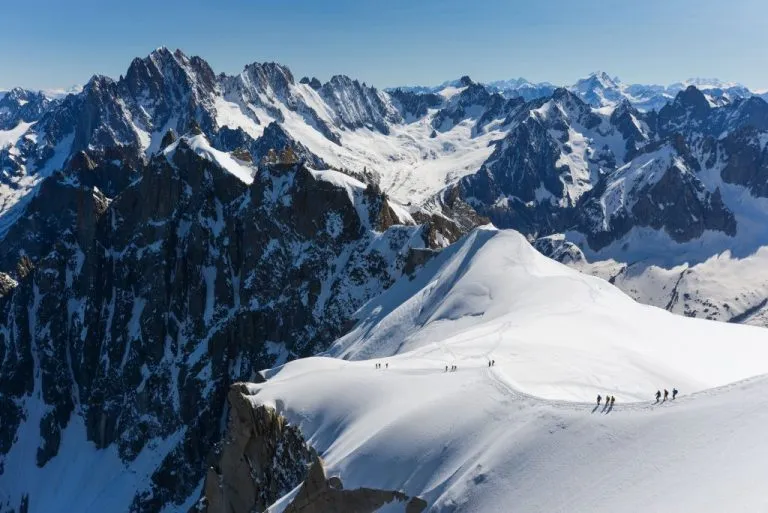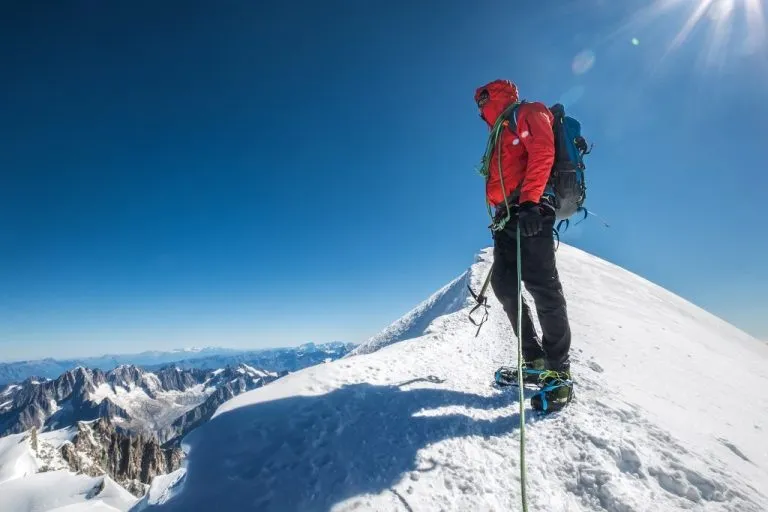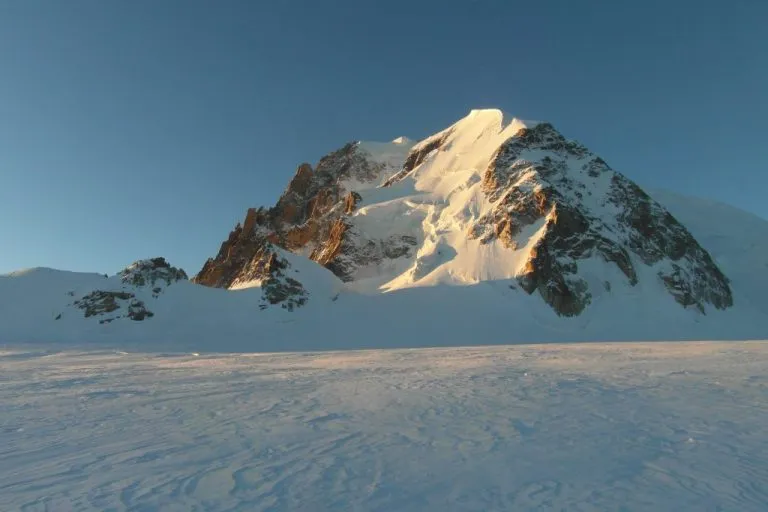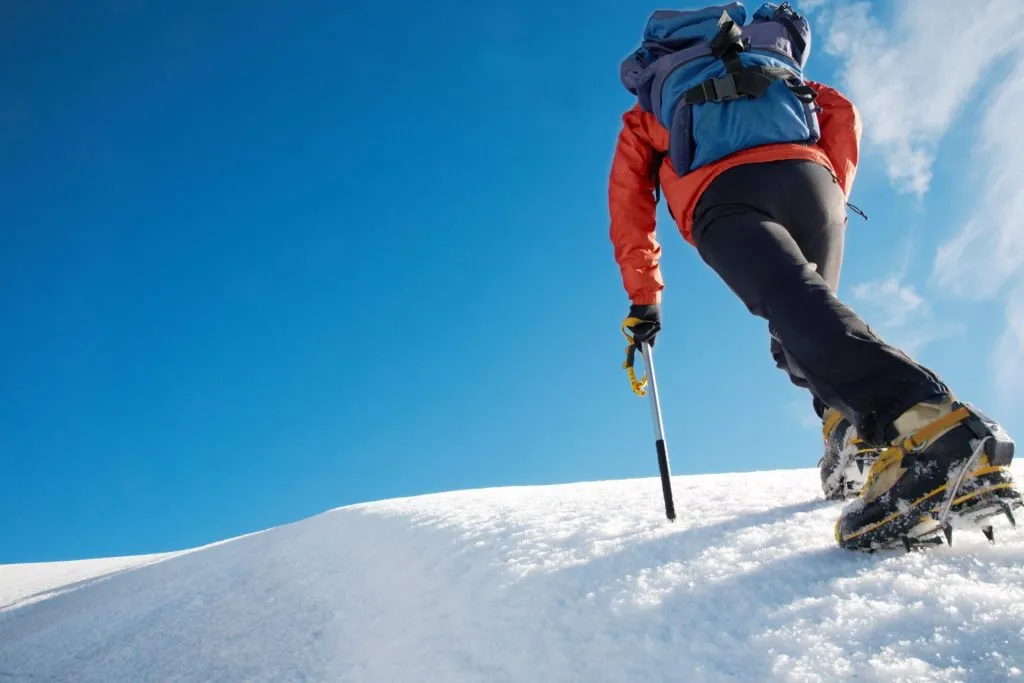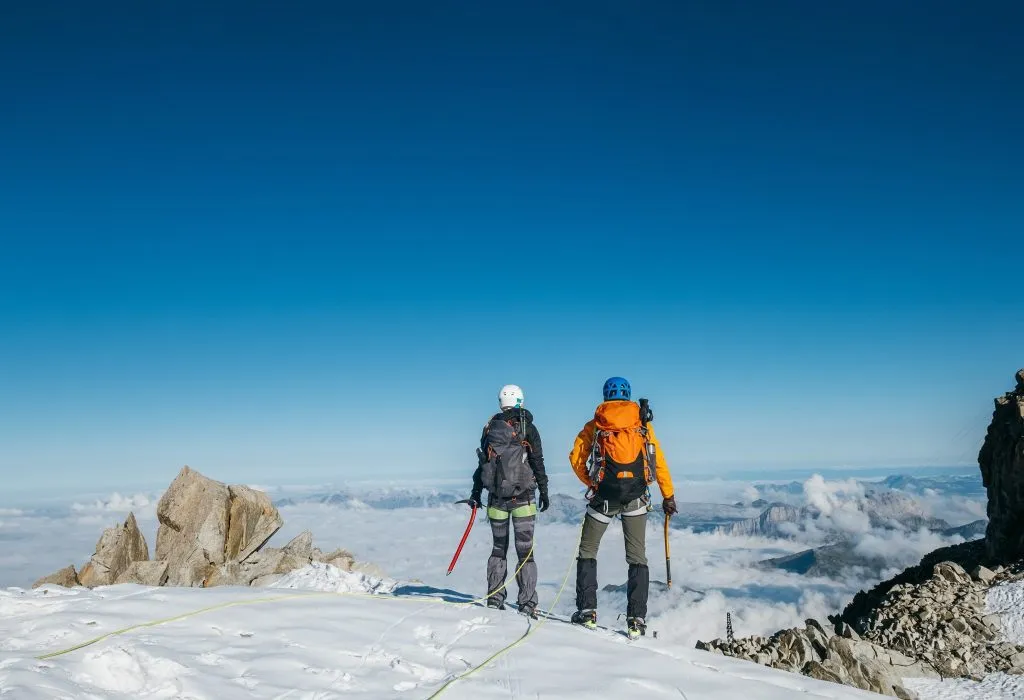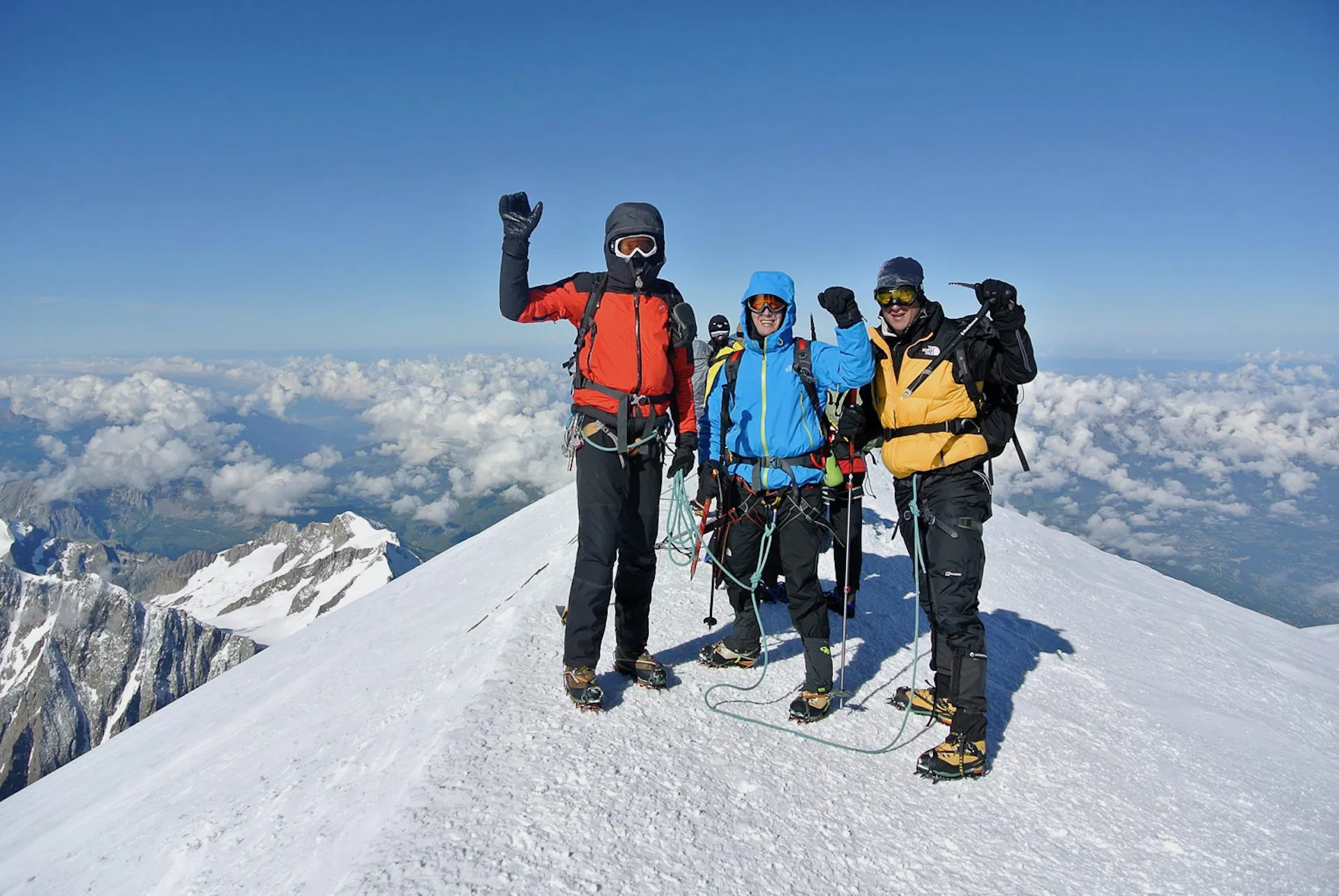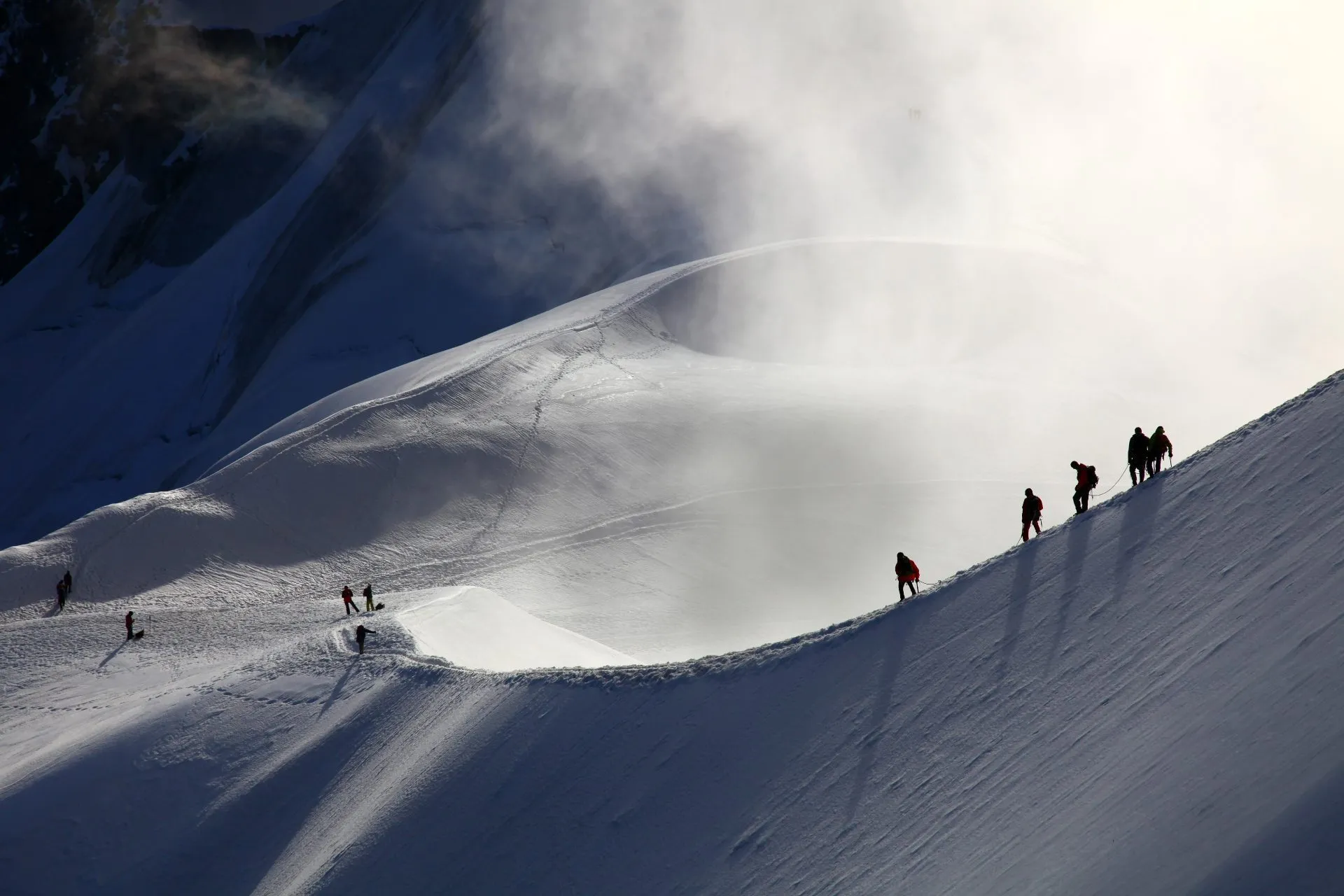
Climb Mont Blanc
Programs
Join us on a Mont Blanc climb!
Secure your spot at our all-inclusive 6-day Mont Blanc expedition created by some of the best Chamonix mountain guides. You will have a chance to summit two 4000ers — Gran Paradiso, the highest peak in Italy, and Mont Blanc, the highest peak of the Alps.
With the added flexibility of a week-long expedition, guaranteed spots in the mountain huts, the support of our experienced professional guides, and an extra acclimatization summit, we strive to give you the best odds to climb Mont Blanc successfully.
Rising 4,808 meters above sea level, it is a dream of many mountain enthusiasts to be standing on its summit at least once in their lifetime. It is at the moment you reach its peak that you can proudly call yourself a mountaineer.
We will help you achieve that dream.
Dates:
15.6.2025 – 21.6.2025 – FULL
22.6.2025 – 28.6.2025 – FULL
29.6.2025 – 3.7.2025 – FULL
4.7.2025 – 9.7.2025 – FULL
10.7.-16.7.2025 – FULL
18.7.2025 – 23.7.2025 – FULL
24.7.2025 – 29.7.2025 – FULL
30.7.2025 – 4.8.2025 – FULL
5.8.2025 – 11.8.2025. – FULL
12.8.2025 – 18.8.2025 – FULL
19.8.2025 – 25.8.2025 – FULL
31.8.2025 – 5.9.2025
6.9.2025 – 11.9.2025
12.9.2025 – 17.9.2025
18.9.2025 – 24.8.2025 – FULL
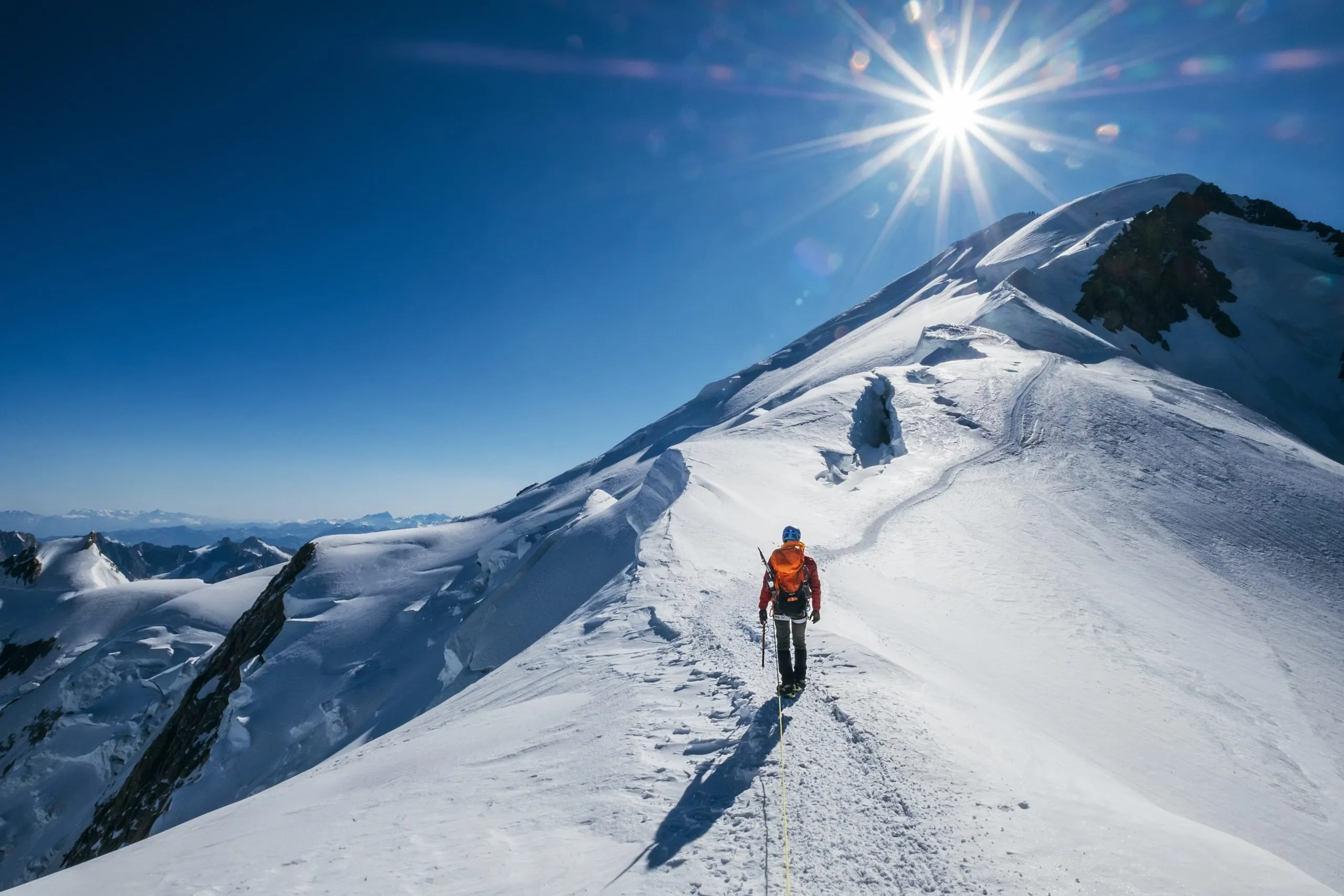
Once-in-a-lifetime opportunity to climb Mont Blanc
In total, our program takes six full days. The first evening and the last morning are reserved for arrival and departure, while the other six are full of mountaineering adventure. Three days for preparation and acclimatization tour to Gran Paradiso and three days for the Mont Blanc guided climb.
Besides all the essentials, our 6-day program also includes an extra climb to Gran Paradiso, the highest peak of Italy. You can see how much the whole trip will cost you (excluding getting to Chamonix) by only looking at our price because we optimized our program for a minimal possibility of extra costs.
Our Mont Blanc expedition includes:
- Two 4000m summits – Mont Blanc & Gran Paradiso
- 3 nights in mountain huts at a high altitude
- Accompanied by professional IFMGA mountain guides
- Based at a hotel in Chamonix
- 24/7 support and assistance by our experienced staff
- All dinners and breakfasts
- All transport – mountain railways, cable cars and shuttles
What makes a successful Mont Blanc expedition?
1. APPROPRIATE EQUIPMENT
We rent all the most important pieces of equipment, but you have to bring most yourself. Check out our gear list to see what you have to bring on your Mont Blanc climb.
2. SOLID FITNESS AND MOUNTAINEERING SKILLS
We’ll teach you the necessary mountain climbing techniques during the week, but you have to come well physically prepared. Without solid endurance fitness, your odds of climbing Mont Blanc are much smaller.
3. EXPERIENCED MONT BLANC GUIDES
Climbing with professional and experienced IMFGA-licensed mountain guides enormously improves your odds of reaching the Mont Blanc summit.
Make your dream a reality and check out our program>
Professional guides
Trustworthy company
24/7 support
Best Prices
Things to know
No. But you have to be aware that climbing Mont Blanc is proper alpinism. And to do proper alpinism, you have to be a proper alpinist.
You have to have a lot of previous experience with winter hiking and climbing. You have to be skilled in walking with crampons, know how to self-arrest with an ice axe, the basics of glacier travel, be familiar with different rope techniques, and more.
If you don’t, trying out the climb without a guide could put you in serious and even life-threatening danger. That’s why we strongly advise all those without the necessary skills and experience to book a guide for their Mont Blanc climb.
You will not only avoid any dangerous situations but also make your climb much less stressful and much more enjoyable. Those who climb with a guide also have a higher chance of making it to the summit on their Mont Blanc expedition.
Our guides are all IFMGA licensed, guaranteeing the highest standard of safety and professionalism in the mountain guiding world. They also have years of experience leading Mont Blanc expedition teams, so you can be sure they will safely guide you all the way to the summit and back down to the valley.
Without proper pre-acclimatization, most people do not reach the peak of Mont Blanc. We designed the program so that you have the highest chance of reaching the summit.
Although it is not as high as the peaks in the Himalayas, and some people can summit without prior acclimatization, it is highly unlikely. Therefore you would be risking a lot of time and preparation and then turn back at the end when developing high altitude sickness. That’s why we also include the acclimatization climb to Gran Paradiso in the first three days.
In the first three days of the expedition, we will teach you all the skills you need to reach the Mont Blanc summit. You will also use these days to acclimatize yourself in a high mountain hut under Gran Paradiso and then climb the peak the next day. All the skills and the experience you get from these first few days are necessary for the climb to Mont Blanc.
Mont Blanc has the highest fatality rate of any mountain in Europe. But it’s not because it is a highly difficult mountain to climb which requires a lot of previous experience and climbing skills. It is because tons of people attempt it each year. And out of those people who do, a lot of them are inexperienced or even novice mountain climbers. They are not ready for the most basic mountaineering challenges.
That’s why many of them perish. They are relying on being lucky because they do neither know the mountain nor are skilled enough in winter mountain climbing. That’s why a guide beside you is so valuable, it significantly lowers the chances of a dangerous situation arising.
Compared to some other mountaineering ascents in the vicinity, Mont Blanc is a relatively non-technical mountain. It doesn’t involve any technical climbing, which is why some of us describe it almost as a “long walk”.
The most difficult part is the scrambling above the Grand Couloir between the Tete Rousse Hut and the Gouter Hut. It isn’t climbing, but it involves using your hands and stepping quite high. The snowy ridge towards the summit is quite exposed, but you just have to walk straight on it and watch out not to trip on your crampons. And don’t worry — on every exposed part like this you will be roped up to our guides.
Weather, good conditions, and good clients — are three main aspects we are looking at when deciding if we should attempt to climb Mont Blanc.
In the case of bad weather or awful snow conditions (high risk of snow avalanche or increased rockfall in the Grand Couloir), we don’t go risking your lives on the climb to it.
Good clients are those who are well prepared physically and have passed the test climb to Gran Paradiso. For those who didn’t, the climb to the summit of Mont Blanc might not be possible. That means they would probably only join us on the hike to some of the huts below the peak and not further on.
The Grand Couloir is located between the Tete Rousse and Gouter Huts on the Normal Route to Mont Blanc. It is known for its stonefall in dry conditions when there is not enough snow to hold the loose rocks from tumbling down the couloir.
We traverse it at about the third of the way between the two huts. Only there, a relative danger of stonefall that can seriously endanger climbers. Crossing it in the early morning is usually the safest, but it depends on the season. If there is very little snow, it might not even be worth risking it. Most of the time, the danger is minimal. We still take this decision seriously and will only decide to go on with the climb if the conditions are good enough.



